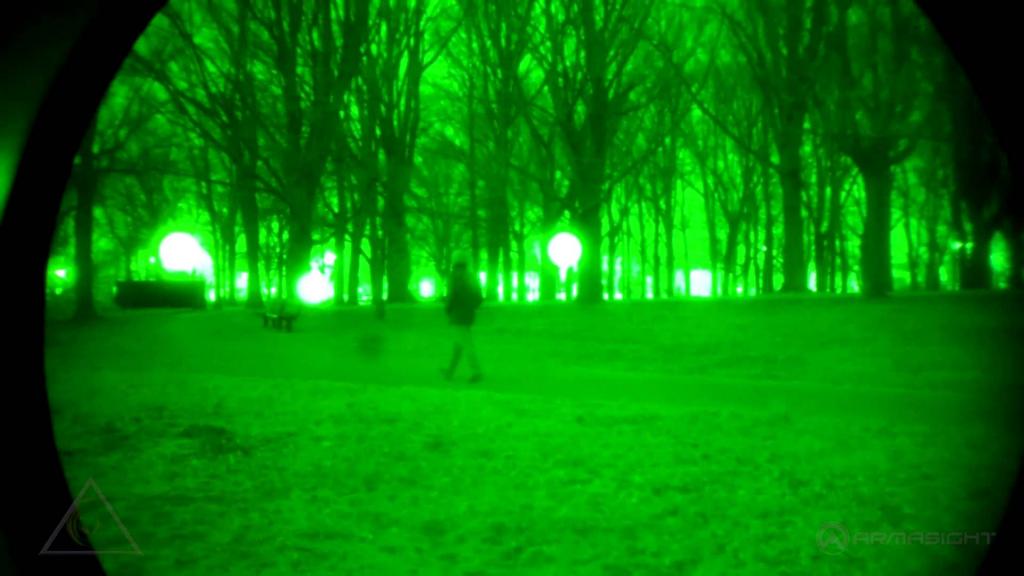Night Vision In Practice
Night vision devices have been developed based on the requirements of the armed forces to detect and identify enemy at night and in low light conditions and are used for several decades. The labeling and nomenclature of night vision devices, we can meet with a variety of expressions. Since the optical amplifiers light devices for residual light optoelectronic monitoring devices, night vision devices over to the older term in farsight etc .
Night vision devices are functionally divided into two groups and one combined .
The first group consists of devices with active illumination targets. These include primarily called. Thermal imager and monitoring devices that need to display the visible light image of the target. To illuminate the targets, however, does not use a conventional light source with visible light spectrum, but in the long wave range of infrared light which is invisible to the human eye. The observation device is then used, which converts the invisible infrared light in the visible spectrum in the image of the lens of the observer. The disadvantage of these devices was especially great weight and complexity to the abundant source of energy, and therefore these devices assembled primarily on military transport and armed technique. For operative use, devices have a further disadvantage and that is essentially composed of two parts. The reflector of an infrared light source and the observer. The tactical disadvantage was that turned on the light source, although not seen by the human eye, but if the enemy had observation vision system, saw clearly the source and location of the light counterparties.
The second group of night vision devices, which gradually replaces said the first group is based on an entirely different principle. The design of these devices stems from the fact that in practical terms there is no absolute darkness, and that landscape lighting is always a reflection of starlight, moonlight, street lighting or light smog, collectively known as residual light. Optoelectronic devices amplify much residual light image obtained by the visible contours and are enlarged. Apparatus first generation which was rather massive, magnified residual light to 10,000 x.
The problem was to enlarge the image, which hovered at just 1.5 to 2.5 x. These instruments were used in the armed forces, but for use in hunting, conditions are still too mismatched. Gradual improvement optoelectronic system and reduction devices have led to the introduction of one and a half and second generation devices. The second generation of devices has been greatly miniaturized to a brighter image when light amplification up to 30,000 x magnification and greater about 3 times. Generation 2 gives magnification to 5 times and allows the illumination targets infrared light.
The optoelectronic system thus secondly amplifies the residual light and simultaneously converts the invisible spectrum of infrared light into the visible part of the human eye. It is, therefore, a combination device group. Third generation devices, and most recently, is considerably miniaturized, where the viewing telescope is so small in size that it is placed on the eyes as ordinary eyeglasses.
Night vision devices are available in two versions. As a classic SLR or Twin-observation binoculars or scopes. For riflescope and sighting telescope with night vision (image intensifier), it is considered such a device, which has a field of view shown sighting warp and on the body in preparation for attachment to a weapon.

What are the legal aspects of the use of night vision devices to hunt?
To the aiming telescope, riflescope with night vision called. Image intensifier, it should be noted that prohibited weapons, prohibited ammunition and prohibited weapons accessories category A. The acquisition, possession and use of weapons, ammunition or weapon accessories category A, without appropriate permission is an offense against the law of arms and ammunition and may be regarded as a criminal offense of illegal possession of arms. For this reason, it is not the possible device with night vision weapon mountable to freely buy and use it freely.
Acquisition observation night vision devices without the aforementioned attributes characteristic of a rifle scope, ie. A device that serves only to observe and not affixed to a gun is legally free.
In the overall, broader perspective on the use of equipment with night vision, it is necessary to take into account the real technological developments, the conditions for hunting and the ensuing consequences. Overpopulation of feral requires rigorous selective culling, especially at night and in low light conditions, but with this method of hunting is associated with numerous risks. It is, of course, unethical caught sow, not the hunter under difficult conditions well recognized, but especially about the tragic cases when a hunter shot a man who must commit farmland pride and is mistaken for a shooter game. Given the immeasurable value of human life, whose loss may prevent the use of advanced technology, it is the even application of the law to see the real context of the actual state of affairs.
In my purely personal opinion and the opinion of a legal expert, acquisition of night vision devices does not generally affected the overall security, but rather its use during night hunts it increases and may prevent frustration of several lives, which unfortunately occurs every year unnecessarily. From this perspective, it should be initiated and change the law.


